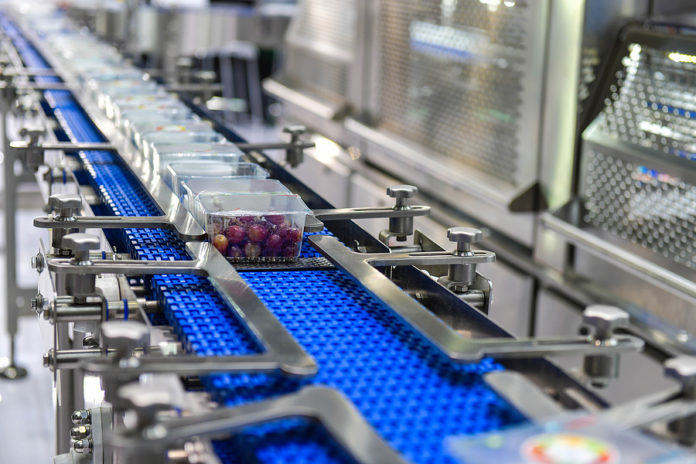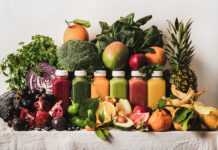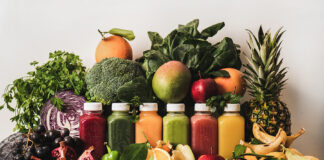
By Fanny Turlure, Global Product Manager at Aryballe
Of all the industries impacted by the pandemic, food and beverage is, unsurprisingly, at the top of the list. We hear on a near constant basis about supply chain challenges and food shortages – most recently, the formula shortage in the U.S. But, despite the resulting challenges and rapidly changing consumer preferences, the industry continues to grow. In fact, it’s estimated that the food industry will reach $513.3 billion by 2025 globally, up 23.6% from 2022.
Younger generations in particular are becoming increasingly concerned with the impact of their shopping decisions. McKinsey found that every generation is trending toward making purchasing decisions based on whether brands share their values, and Gen Z and millennials are leading the charge. As Gen Z’s presence in the consumer market develops into a highly influential one, with an estimated collective buying power of $150 billion already, it’s important for the food and beverage industry to be aware of the factors that contribute to their buying decisions.
There are a few trends that map back to buyer habits and are essential for brands to get on board with as well as key advancements in technology that are driving the industry forward. Let’s dive into these trends and how digital olfaction, which mimics the way our brains identify and differentiate between odors, is helping manufacturers keep up.
Sustainability
As consumers become more mindful of their own environmental footprint, they demand that manufacturers do the same. Consumers want to make a difference where they can, and that includes supporting businesses that have prioritized sustainability. It’s estimated that more than one-third of consumers globally are willing to pay more for products or services that are sustainable. Consumers want to support brands and products that are mindful of natural resources and produce as little harm as possible to the environment, throughout the entire manufacturing process.
Innovative technologies can help manufacturers carry out more sustainable practices and be more transparent and retain customers. For example, digital olfaction can help ensure that alternative solutions for packaging or food/beverage products are in line with the current standard. That includes ensuring that recycled plastic does not contain carry-over odors either from their previous life (i.e., the product they were packaging), or from recycling processes (involving heating, which can generate off-odors). This could also include testing new flavors generated with green chemistry/white biotechnology processes. These processes aim to synthetically reproduce the odor from natural compounds that are extracted from raw materials or plants harvested in the field.
With digital olfaction, manufacturers can also consider continuously monitoring transformation processes including distillation, which consume energy and would benefit from being kept as short as possible. This also works for analyzing cleaning-in-place processes, in which large quantities of water are flushed through massive food and beverage tanks between batches, to ensure there is no carry-over odor or taste. Essentially, digital olfaction can provide manufacturers with the key data needed to enable them to adjust products and operations, allowing manufacturers to be more sustainable but still desirable to the consumer.
Health consciousness
The COVID-19 pandemic forced everyone to pause their typical routines, and with that, many people were prompted to analyze their consumption habits. McKinsey estimates that the wellness market is valued at more than $1.5 trillion as consumers aim to be healthier across all areas of life. People are aware of their physical and mental health and they recognize the crucial role food plays. This has led to demand for healthier products. One area that has seen significant growth is plant-based proteins, for their health benefits to humans and the environment alike.
While a great revenue opportunity, developing alternative meats presents a distinct challenge for manufacturers. Meats have unique flavor profiles that can be difficult to replicate in plant form. In addition, plants typically generate off-flavors that need to be masked by flavoring agents. Manufacturers typically begin with thousands of reformulations that must be systematically screened to identify the closest match. Brands know that to meet growing consumer demand and remain competitive, they need to roll out new, quality formulas – fast. This process, however, can be very costly and time-consuming as the reproduction and refinement of these flavor profiles call for acute repetition and attention to detail. Using digital olfaction for rapid formulation screening empowers manufacturers to better predict which product evolutions will resonate with consumers, and enables them to screen formulas 24/7 through automation if they choose to do so.
Industry standardization
Standardization and regulation are also becoming hot topics for discussion in the food and beverage industry. Recent supply chain constraints have made it more difficult for manufacturers to remain consistent with ingredients and quality, which can lead to an altered end-consumer experience. Ingredients are influenced by factors such as weather and shortages, which create production issues and ultimately impact quality. Ingredients can also be directly produced by green chemistry which can impact the quality of products and therefore the consumer experience. These inconsistencies have led manufacturers to question the quality and source of products and the challenges they introduce to the manufacturing process. To curb these challenges, manufacturers need to leverage innovative tools and technology that enable transparency throughout the supply chain process.
A prime example that illustrates the need for standardization is increased analysis with microbial fermentation, especially when it comes to ensuring consistent quality of fermented milk (one example being yogurt). The fermentation of milk into yogurt is mostly assessed through pH measurements, a process that is compatible with automation and industrial settings, but doesn’t allow manufacturers to monitor the aroma – a vital part of the yogurt-eating experience. As a result, manufacturers require tools to control the correct evolution of fermented food and standardize and ensure quality aroma in yogurts. It’s important to follow the fermentation process, based on the olfactory profile of the mixture of volatile organic compounds (VOCs) emitted by fermenting bacteria. Through digital olfaction, manufacturers can assess raw materials and odor data that can give them a concrete method for ensuring consistency and quality. This ultimately optimizes the entire process, allowing production to run faster and more smoothly.
Leveraging smart technologies
As the food and beverage industry continues to evolve, we’ll see a growing number of manufacturers leverage smart technologies like artificial intelligence (AI) and machine learning (ML) to work faster and smarter and address these growing trends. Digital olfaction, which is just one example of these smart technologies, can be an extremely helpful tool.
As manufacturers continue to test and roll out new products in the industry, digital olfaction can help analyze new formulas and predict which products will resonate best with consumers. This helps manufacturers develop formulations much faster and at a lower cost by reducing the number of formulas that must be screened, as well as the amount of consumer testing (and/or human panels) involved. Additionally, digital olfaction can help manufacturers develop novel products by suggesting unusual combinations that a human mind would not have considered, or help develop extremely targeted products for specific geographical areas.
Exploring the power of odor
Odor is often the forgotten sense, especially in manufacturing, but in food and beverage it holds significant weight. Smell has a major impact on consumer satisfaction, and manufacturers want to be able to guarantee their customers experience the intended outcome of their product. Through the use of innovative technologies such as digital olfaction, manufacturers can ensure more consistent products across their global locations while also allowing for simple traceability and an improved quality management system. These are just a few of the added benefits for food manufacturers, as digital olfaction also enables lower-cost operations while creating more impactful consumer experiences.
While we cannot predict the future of the food and beverage industry, or exactly how impactful each of these trends will be, I anticipate the manufacturers that find the most success in a rapidly-changing environment will be the ones that implement these technologies, and I’m excited to witness what’s to come, as both a product developer and consumer.
 As global product manager, Fanny Turlure, Ph.D., guides the efforts of Aryballe’s devices team for development of new hardware products and improvement of existing products based on customer feedback and market needs. Prior to her role at Aryballe, Turlure worked in the bioscience field—in both Europe and the U.S., Turlure holds a Ph.D. from Imperial College London in Cell and Molecular Biology. You can read more from Fanny on Aryballe’s blog.
As global product manager, Fanny Turlure, Ph.D., guides the efforts of Aryballe’s devices team for development of new hardware products and improvement of existing products based on customer feedback and market needs. Prior to her role at Aryballe, Turlure worked in the bioscience field—in both Europe and the U.S., Turlure holds a Ph.D. from Imperial College London in Cell and Molecular Biology. You can read more from Fanny on Aryballe’s blog.









